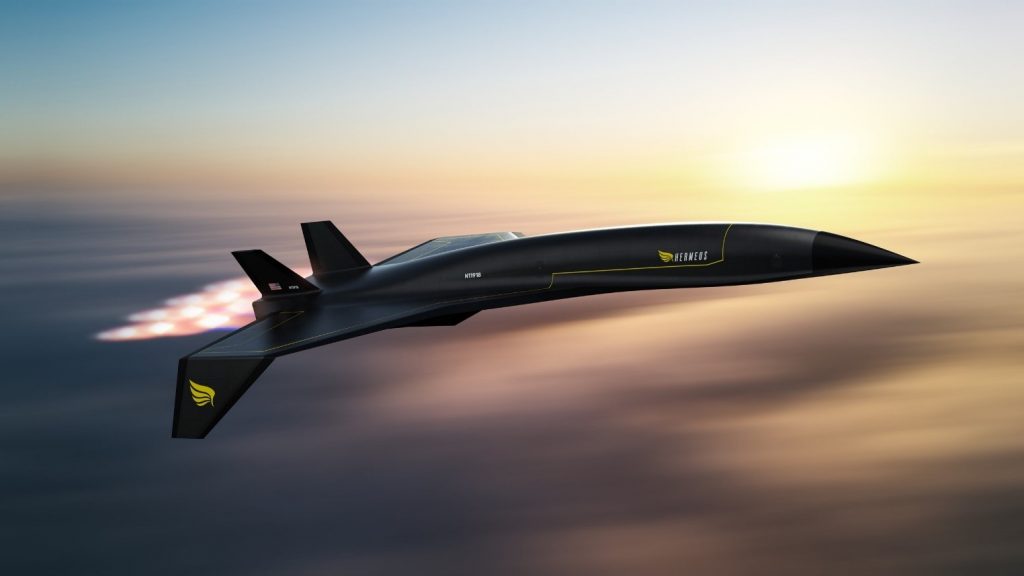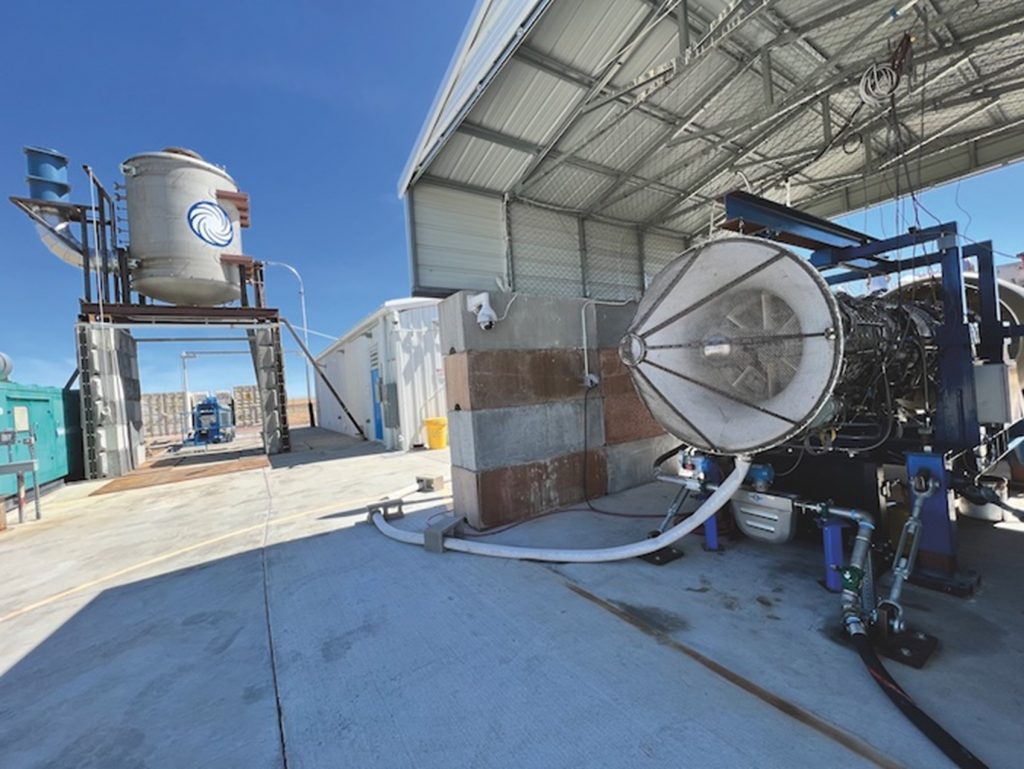Hypersonic commercial flight is an ambitious goal, but companies are developing the technologies needed to propel passengers to Mach 5 and beyond. Hypersonic aviation companies have long, sleek aircraft designs, ideas, and ambitious R&D programs.
Companies such as Hermeus and Stratolaunch in the US and Australia-based Hypersonix are leading hypersonic aircraft development.
Hermeus’ Quarterhorse is expected to fly next year and will be capable of Mach 4+. It is being developed primarily to test Hermeus’ Chimera turbine-based combined cycle engine, which it intends to use in its future hypersonic aircraft.

Stratolaunch’s Mach 6+ Talon-A is expected to fly before the end of this year and will be the first fully hypersonic-capable vehicle with an integrated propulsion system, a liquid-fuelled rocket engine. It will be air-launched from the company’s Roc carrier aircraft, which is the world’s largest aircraft with a wingspan of 385ft (120m).
Crucially, Talon-A will be reusable. Current flight testing at hypersonic speeds is done with testbeds that crash land. This means only relatively small amounts of data are produced and recovered.
Stratolaunch is agnostic about who they are testing for and is trying to advance the technology for everyone.

Stratolaunch plans to fly Talon-A once every 30 days by the end of the year. The separation test is next, followed by the first expendable launch and landing vehicles. Roc provides flexibility with the size of the pylon, allowing for the best aerodynamic conditions for release. Stratolaunch is a testing services company.
Hypersonix development
Hypersonix is taking steps to develop a space-launch platform and hypersonic aircraft using Australian Government funding. Dr Michael Smart, chief technology officer, director and head of R&D at Hypersonix, lists the major technical challenges facing hypersonic flight as thermal management of the airframe and the development of a way to facilitate horizontal take-off. Hypersonix plans to fly a testbed next year, Dart AE, which will flight test the company’s hydrogen-fueled Spartan scramjet engine for the first time. Rocket Lab is supplying a rocket booster for Dart which will propel it to Mach 5, after which Spartan will ignite to produce speeds of up to Mach 12. Dart will be launched using a guided rocket, although Hypersonix has plans to develop a more complex, re-usable three stage launch system called Wirraway. Hypersonix is already working with Kratos and Smart sees the potential in partnerships with other companies and countries.

(Images: Hypersonix)
Partnership Plan
Reaction Engines is a hypersonic R&D company founded in 1989 to develop a spaceplane. President Adam Dissel heads up the business in the USA and is pragmatic about the challenge of developing a hypersonic aircraft. Reaction works with BAE Systems, Rolls-Royce, the UK’s MOD and the US Air Force (USAF). The partnerships have requirements that must be fulfilled and pragmatic near-term targets. In January, Reaction successfully completed a ground testing campaign in Colorado with the USAF to demonstrate the suitability of its precooler technology to boost the performance of current generation fighter jet engines. The precooler test item allows current jets to fly at a much higher speed without a brand new engine.


Dissel believes that hypersonic aircraft propulsion systems based on rocket engine technology will be complex, difficult to maintain, and have low lifetimes. Reaction is working in the UK on the HVX program, which aims to develop hypersonic technologies including air-breathing propulsion engines, thermal management systems, and advanced vehicle concepts. As part of the program, Reaction’s precooler technology is being combined with a subscale jet engine for ground testing and then scaled up to engine sizes large enough for use in aircraft. Dissel is excited about the high-speed market, believing that there are commercial and defense angles and that it is a partnership approach with other companies and different governments and countries to make it real.
Destinus Project (Europe)
Destinus, a European company founded in 2021, has grown to 80 people and has offices in Switzerland, Toulouse and Paris. It plans to build two hypersonic aircraft, one transoceanic and one transglobal, both hydrogen-fueled and flying at altitudes of 30-40km. It is conducting flight testing using subsonic prototypes and ramping up quickly towards flying a supersonic prototype next year. The thermal management system is a patented concept that uses pipes carrying hydrogen to reduce temperature at the hot surfaces of the aircraft. The company is also developing hydrogen afterburners and an autopilot system and is doing research on the vehicle design.


Destinus’ technology to-do list for a hypersonic aircraft includes thermal management and a propulsion system that can enable horizontal take-offs and landings. The decision to use hydrogen fuel was made early on due to environmental and design considerations. Hydrogen is lightweight and more efficient than Jet A fuel at speeds above Mach 3 and ranges of more than 3,000km.
Destinus is an ambitious testing program that will burn through money as fast as it combusts hydrogen. The company is seeking funding support from governments in the form of joint R&D programs. Destinus plans to sell access to its test facilities to other companies as and when they become available. The company is also looking at the possibility of developing hypersonic-capable unmanned vehicles that could be used for R&D and defense applications as a revenue source. Lofqvist (senior business development director) believes there is strong support for Destinus in Europe and believes market demand will exist for hypersonic passenger flights in the future.
Non-technical challenges are not driving design or development at the present moment, but most hypersonic companies are addressing innovating within thermal management and propulsion first. There is a growing awareness that surmounting the barriers to hypersonic flight will require the pooling of resources and knowledge between companies and countries.
Hypersonic propulsion is challenging
The most important details in this text are the development of a reusable, reliable engine capable of propelling aircraft to hypersonic speeds. The most successful hypersonic manned aircraft is the USA’s X-15 (it was air-launched and used rocket engines in the 1950s and 1960s), which achieved a speed of Mach 3.7. The fastest air-breathing manned aircraft is the SR71 Blackbird spy plane, which was powered by two Pratt & Whitney J58 axial flow turbojet engines and was capable of Mach 3.2. The SR71’s J58 engine is often called a turbo ramjet. Ramjets use the forward motion of the engine during flight to compress incoming air instead of a rotary compressor. They can only be used at speeds above Mach 2. The scramjet (supersonic combustion ramjet) is designed for speeds above Mach 6, but no flight tests have surpassed Mach 9.6. Companies are pursuing several propulsion technologies, but crucial to hypersonic flights is the development of a capability to power an aircraft through the lower atmosphere using conventional jet engine technology before switching to a ramjet system for hypersonic speeds.
Venus Aerospace is developing hypersonic drones and passenger aircraft.
Velontra is building an unmanned spaceplane that uses a jet engine and airbreathing propulsion.
Radian Aerospace is launching a delta-winged spaceplane Radian One that will be launched from a rocket-powered sled and used to orbit for manned missions of up to five days before returning to Earth.
